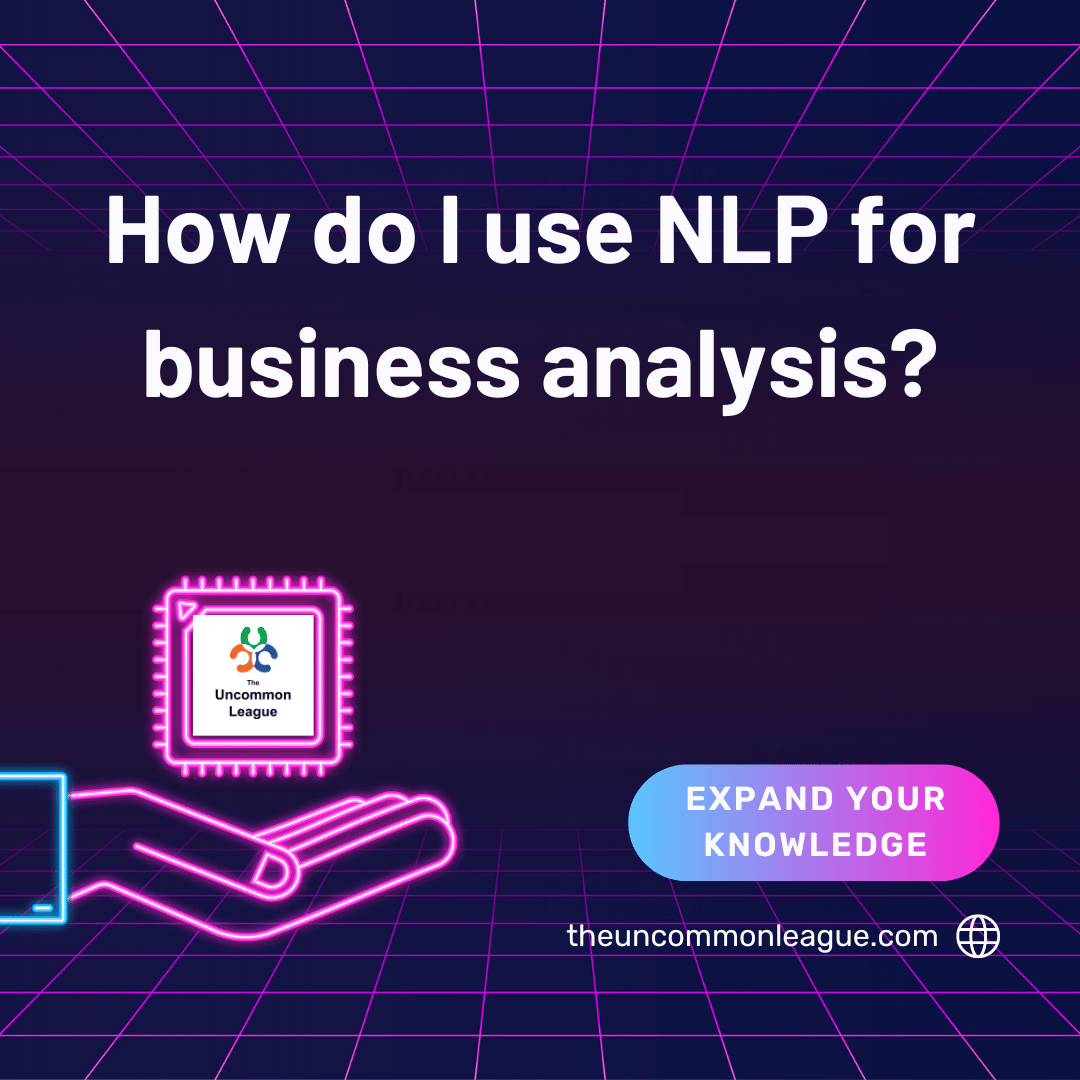How do I use NLP for business analysis?
In the dynamic realm of business analysis, Natural Language Processing (NLP) emerges as a revolutionary tool, transforming data into actionable insights and redefining competitive edges. As businesses navigate through vast oceans of unstructured data—from customer feedback and social media chatter to emails and documents—NLP stands as a beacon, guiding analysts to harness this data's true potential. This article embarks on a journey to explore how NLP can be leveraged for business analysis, offering a step-by-step guide and showcasing tools that can turn the tide in your favor.
Step 1: Setting the Sail with Clear Objectives
Before diving into the vast capabilities of NLP, it's crucial to chart your course with clear objectives. Identify the specific business questions you aim to answer or the challenges you seek to address. Are you looking to enhance customer satisfaction, streamline operations, or perhaps identify emerging market trends? Setting clear objectives will not only guide your NLP journey but also ensure that your efforts are aligned with your business goals.
Step 2: Gathering the Data - Your Treasure Trove
The foundation of any NLP-driven analysis is data. Begin by gathering relevant unstructured data from various sources such as customer reviews, social media, email correspondences, and internal documents. Tools like web scrapers can automate the collection of online data, while APIs from platforms like Twitter or Facebook can funnel social media data directly into your analysis pipeline.
Step 3: Preparing the Data - Polishing the Gems
With your treasure trove of data at hand, the next step involves data cleaning and preprocessing—a crucial phase where raw data is transformed into a format suitable for NLP analysis. This includes tasks like removing irrelevant information, correcting typos, and standardizing text data. Tools like NLTK (Natural Language Toolkit) and spaCy offer robust functionalities for text preprocessing, streamlining this otherwise daunting task.
Step 4: Exploring the Data - Mapping the Depths
Data exploration in NLP involves delving into your text data to uncover initial insights and patterns. Techniques such as word frequency analysis can reveal the most prominent terms, while sentiment analysis can gauge the overall sentiment in customer feedback or social media posts. Tools like TextBlob and VADER are excellent for sentiment analysis, providing intuitive interfaces and actionable insights.
Step 5: Analyzing the Data - Uncovering Hidden Treasures
This is where the true power of NLP shines, as you apply more advanced analyses to extract deeper insights:
Topic Modeling: Use algorithms like Latent Dirichlet Allocation (LDA) to discover the underlying topics within your text data. Tools like Gensim offer powerful topic modeling capabilities, enabling you to identify key themes in customer feedback or market reports.
Named Entity Recognition (NER): Utilize NER to identify and categorize key entities in text data, such as product names, locations, or organizations. spaCy provides efficient NER functionalities, helping you to highlight important elements in your data.
Trend Analysis: Employ NLP to track how certain topics, sentiments, or terms trend over time, offering insights into shifting customer preferences or market dynamics. Python libraries like Pandas, in conjunction with NLP tools, can facilitate this temporal analysis.
Step 6: Visualizing the Insights - Painting the Picture
Visualization plays a pivotal role in making the insights gleaned from NLP analysis accessible and comprehensible. Tools like WordCloud can generate visually engaging representations of key terms, while libraries like Matplotlib and Seaborn can help in plotting sentiment trends or topic prevalence over time, offering a graphical narrative of your findings.
Step 7: Integrating Insights into Decision-Making - Navigating Forward
The ultimate goal of NLP in business analysis is to inform decision-making. Integrate the insights gained from your NLP analysis into strategic business discussions, using them to support recommendations, guide product development, tailor marketing strategies, or enhance customer experiences. Ensure that the insights are communicated effectively to stakeholders, translating complex findings into actionable business strategies.
Step 8: Continuous Monitoring and Adaptation - Setting the Course
In the ever-changing business landscape, continuous monitoring and adaptation are key. Set up systems to regularly collect and analyze new data, ensuring your NLP-driven insights remain current and relevant. This iterative process allows you to stay ahead of emerging trends, adapt to shifting customer needs, and continually refine your business strategies.
April 15 - 17, 2024 (3 Days)
9:00 am (Central) until 5:00pm (Central)
Online - Live Instructor
Tools of the Trade - Your NLP Arsenal
Several tools stand out in the NLP domain, each offering unique functionalities to aid in your business analysis journey:
NLTK and spaCy: These comprehensive NLP libraries offer a wide range of functionalities for text processing, from tokenization and stemming to part-of-speech tagging and entity recognition, serving as the backbone for many NLP projects.
Gensim: Specializing in topic modeling and document similarity, Gensim is invaluable for uncovering the underlying themes in your text data.
TextBlob and VADER: These tools are particularly adept at sentiment analysis, providing intuitive APIs to gauge sentiments expressed in text data.
Tableau and Power BI: Beyond traditional NLP tools, data visualization platforms like Tableau and Power BI can integrate NLP insights, offering dynamic dashboards and reports that bring your data to life.
The Business Analysis Quest
In the quest to harness the power of NLP for business analysis, the journey is both challenging and rewarding. By following this step-by-step guide and leveraging the right tools, you can unlock the vast potential hidden within unstructured data, transforming text into insights that drive strategic decisions. Whether you're a seasoned analyst or new to the realm of NLP, the time to embark on this journey is now. As you navigate through the intricacies of NLP, remember that the ultimate goal is not just to analyze data but to weave it into the fabric of your business decisions, propelling your organization towards uncharted territories of innovation and success.
Tags #businessanalysis #ai


